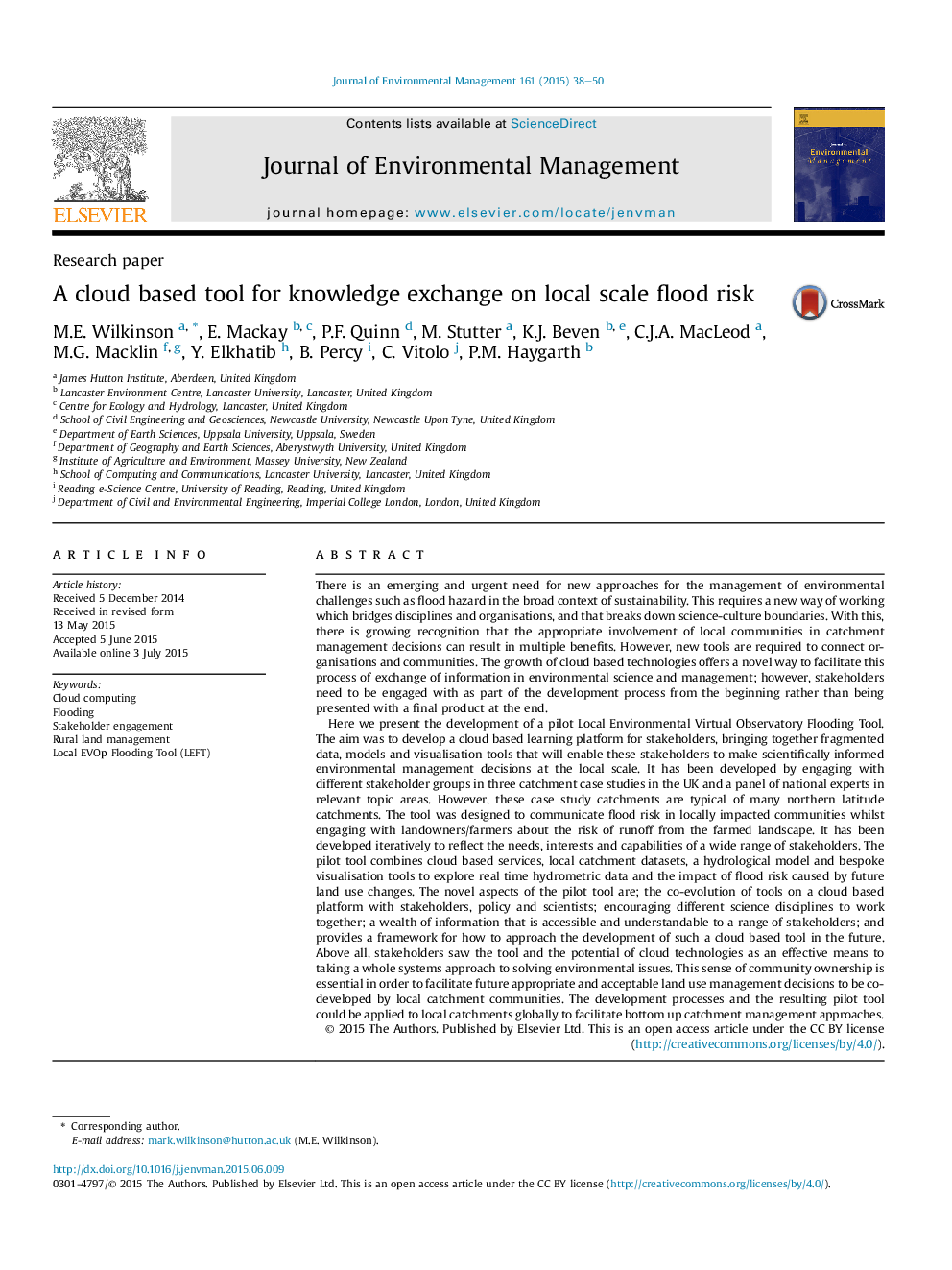| Article ID | Journal | Published Year | Pages | File Type |
|---|---|---|---|---|
| 7481508 | Journal of Environmental Management | 2015 | 13 Pages |
Abstract
Here we present the development of a pilot Local Environmental Virtual Observatory Flooding Tool. The aim was to develop a cloud based learning platform for stakeholders, bringing together fragmented data, models and visualisation tools that will enable these stakeholders to make scientifically informed environmental management decisions at the local scale. It has been developed by engaging with different stakeholder groups in three catchment case studies in the UK and a panel of national experts in relevant topic areas. However, these case study catchments are typical of many northern latitude catchments. The tool was designed to communicate flood risk in locally impacted communities whilst engaging with landowners/farmers about the risk of runoff from the farmed landscape. It has been developed iteratively to reflect the needs, interests and capabilities of a wide range of stakeholders. The pilot tool combines cloud based services, local catchment datasets, a hydrological model and bespoke visualisation tools to explore real time hydrometric data and the impact of flood risk caused by future land use changes. The novel aspects of the pilot tool are; the co-evolution of tools on a cloud based platform with stakeholders, policy and scientists; encouraging different science disciplines to work together; a wealth of information that is accessible and understandable to a range of stakeholders; and provides a framework for how to approach the development of such a cloud based tool in the future. Above all, stakeholders saw the tool and the potential of cloud technologies as an effective means to taking a whole systems approach to solving environmental issues. This sense of community ownership is essential in order to facilitate future appropriate and acceptable land use management decisions to be co-developed by local catchment communities. The development processes and the resulting pilot tool could be applied to local catchments globally to facilitate bottom up catchment management approaches.
Related Topics
Physical Sciences and Engineering
Energy
Renewable Energy, Sustainability and the Environment
Authors
M.E. Wilkinson, E. Mackay, P.F. Quinn, M. Stutter, K.J. Beven, C.J.A. MacLeod, M.G. Macklin, Y. Elkhatib, B. Percy, C. Vitolo, P.M. Haygarth,
